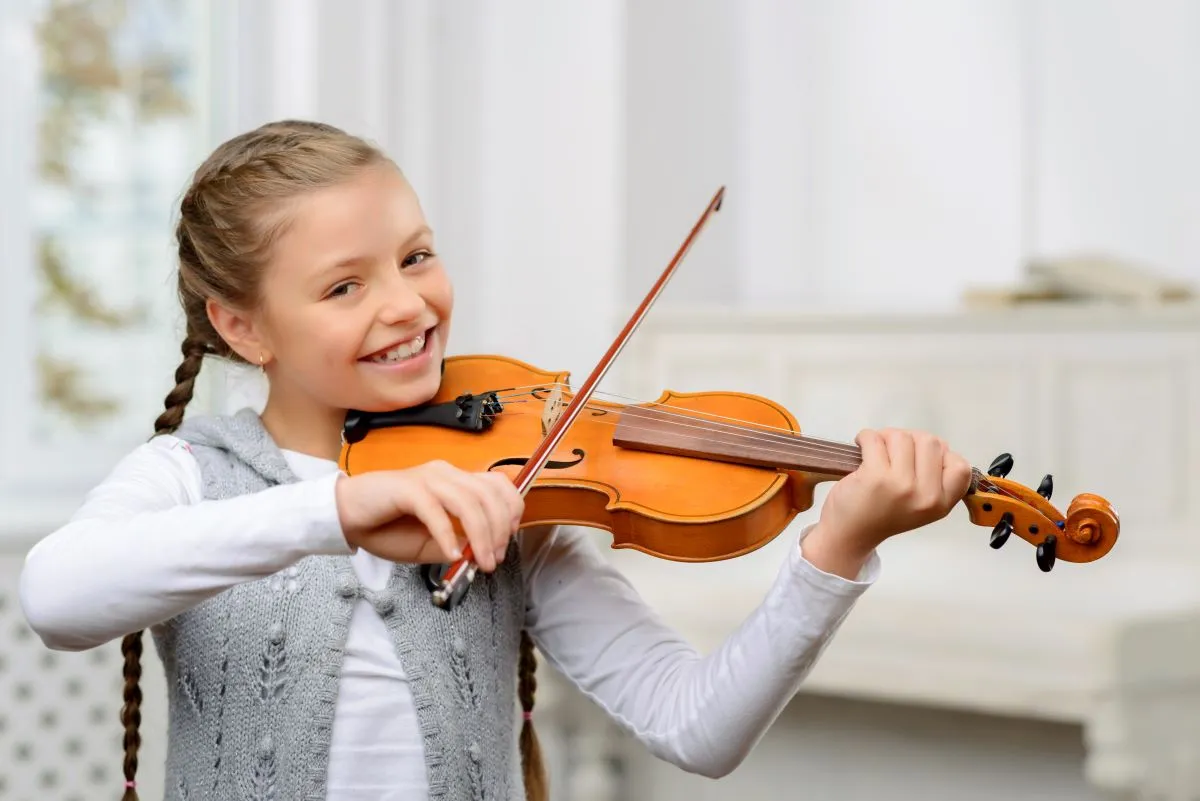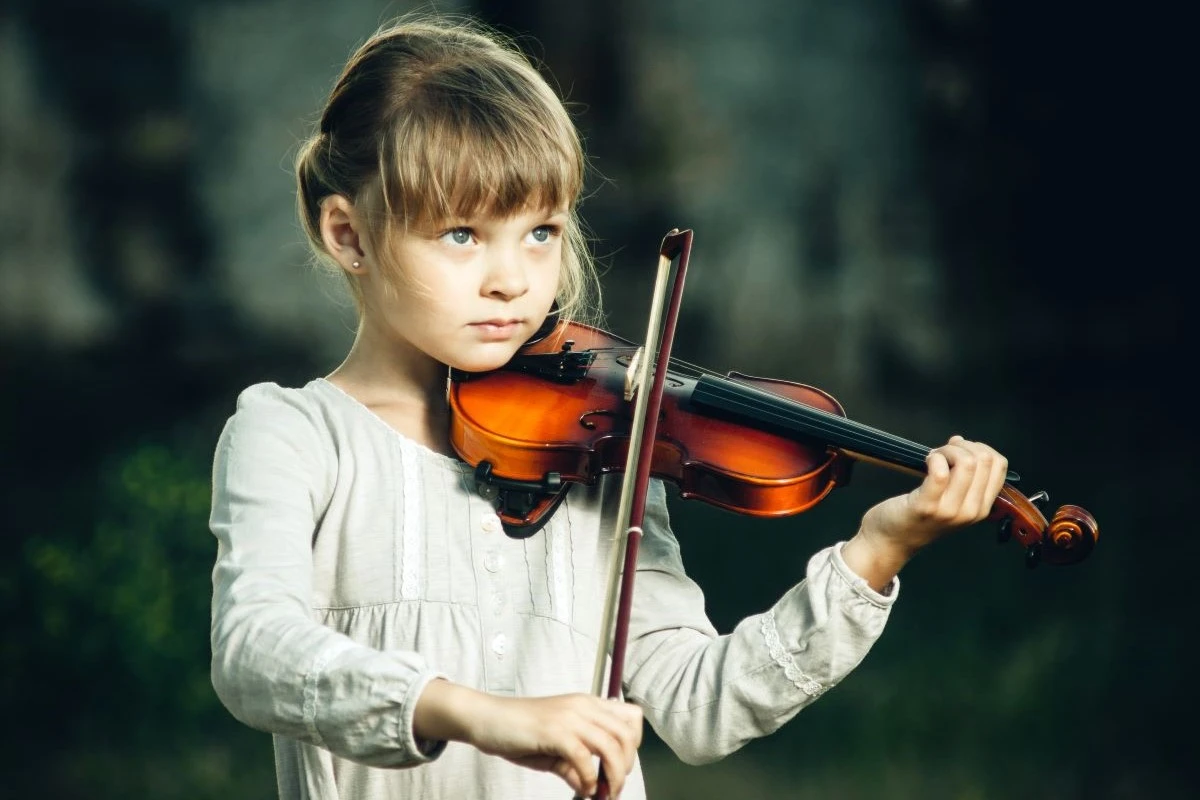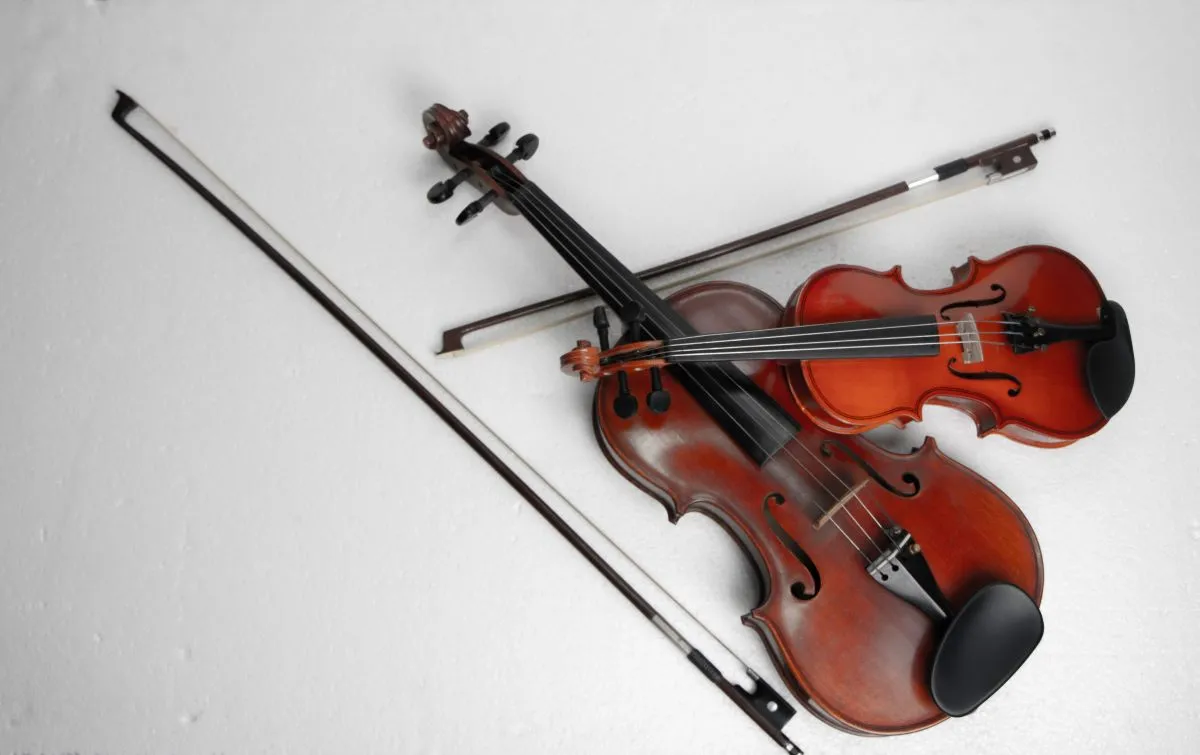
Violin lessons for children go beyond just learning an instrument—they build confidence and foster valuable life skills.
Learning the violin as a child is a process filled with discovery, creativity and joy. Following their developmental stages, children violin lessons combine structured learning with elements of play, imagination and family support, making the process both enjoyable and fun. Learn more about how violin lessons work for children, what they will learn, how progress can be assessed and the unique differences between adults and children violin lessons.
Children aged 5 to 8 years old typically start with 30-minute lessons. As they grow and their concentration improves, they can progress to 45-minute lessons, eventually reaching one hour of tuition as teenagers or when they become more mature and advanced on the violin.
Our violin lessons for children are taught on a one-to-one basis, allowing for personalized attention tailored to each child’s unique learning style and pace. This ensures that students build a solid foundation and develop good technique.
The ideal frequency for lessons is once a week. During their weekly lesson, children receive feedback and are given practice assignments to work on at home throughout the week.
It’s best for a child to try out the violin before committing to long-term enrolment. During a trial violin lesson, the child gets to hold the instrument and explore its sound by playing a few notes in a friendly and supportive environment.
Not all violins are the same! The right violin size for a child depends on their height and arm length.

The main goal of learning the violin is to help children develop these skills:
TAKE THE FIRST STEP
As a young violin student, your child will learn:
Progress could be measured by your child’s ability to read and understand music independently, showing fluency and comprehension when encountering new pieces.
Your child could be evaluated on his/her accuracy in rhythm, intonation, articulation and phrasing when performing music. This shows how well he/she can apply the knowledge learned in his/her violin lessons.
After listening to music, children’s progress could be assessed on their ability to describe its key characteristics, demonstrating their ability to understand and connect the music with what they have learned in class.
The ability to apply the teacher’s feedback and develop greater independence in the violin practice will show his/her progress in learning.
Advancement with the violin can be seen in his/her ability to perform pieces confidently in front of others. This shows self-control, mastery of the work and growing comfort in performing. It also reflects the ability to manage nerves and play naturally before an audience, demonstrating his/her overall development and confidence.
Children’s ability to play as part of a group will show his/her progress in listening to the violin and adapting to other instruments or voices while playing together.

Violin lessons for adults and children differ significantly in approach, goals and teaching strategies. While both groups share the joy of learning music, violin lessons for children incorporate elements of play and creativity to suit their developmental stages.
In children’s violin lessons, the focus is on fostering a love for music while channeling their curiosity and energy into structured learning.
Violin lessons for children are meant to inspire a love for music while building a strong technical foundation. Through playful activities, children develop essential skills that extend beyond music. Whether mastering their first piece or playing confidently in a group, children experience a sense of joy that stays with them for a lifetime. With the right guidance and practice, these early musical experiences can spark a lifelong passion for the violin and the arts.
Pick your favorite instrument and start making music today!
MUSIC LESSONSHow to enroll
Categories